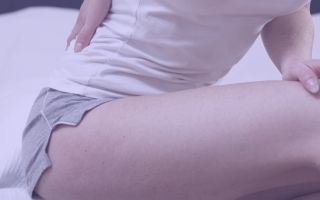Epithelial coccygeal duct (ECX, pilar cyst, dermoid fistula, ectodermal sacrococcygeal sinus) is a developmental anomaly characterized by the formation of a blind canal lined with skin, opening outward with one or more pinhole openings in the intergluteal fold at the coccyx.
Content
Development of the disease
It is believed that this is a vestigial muscle that once controlled the tail. It is a channel, as thick as a finger, lined from the inside with skin cells. Hair and even teeth can grow in it.
Microbes that get into the canal cause inflammation; exfoliated skin cells, sweat, and secretions from the sebaceous glands can clog the outlet and suppuration develops. An abscess appears. After opening it, a purulent fistula may remain. This situation is more often observed in males.
Symptoms
The epithelial coccygeal duct may never appear throughout life.
Its only manifestation may be a tuft of hair protruding from a hole in the skin. In these cases, treatment is not required.
Often the first symptoms appear in old age with suppuration of the cyst and the formation of phlegmon or fistula.
The following signs indicate this development of the process:
- the appearance of severe pain in the sacrococcygeal region,
- compaction, which can reach large sizes,
- increase in body temperature to 38-39ºС,
- thinning and redness of the skin,
- the appearance of a large boil with a yellow head.
As a result, the abscess either opens on its own, or this must be done surgically.
Diagnostics
The diagnosis is determined by external examination of the patient.
A number of signs are characteristic of this disease:
- the external opening is located strictly along the midline of the sacrococcygeal region, in the intergluteal fold,
- Long hair often grows in open epithelial ducts.
To clarify the features of the course, fistulography is indicated.
Sometimes a suppurating coccygeal tract is mistaken for a rectal fistula.
However, there are two differences that help distinguish these pathologies.
- The fistula opening of the epithelial coccygeal tract is located near the apex of the coccyx (about 5-7 cm from the anus), while the external opening of the rectal fistula is rarely so far from the anus.
- When a probe is inserted into the coccygeal tract, it is directed upward towards the apex of the coccyx, whereas with a rectal fistula, it is directed towards the rectum (often extends into its lumen).
Treatment
The suppurating epithelial coccygeal duct (abscess) is opened surgically. A tampon with Vishnevsky ointment is placed in the cavity at the site of the opened abscess for 2-3 days.
After the operation, daily warm baths with potassium permanganate and dressing the wound with a change of tampon are recommended.
After opening the abscess, the wound heals completely. But to do this, you should be careful for some time, since the abscess can reoccur due to a minor injury, long driving, or excessive cooling.
When should surgery be done?
It is believed that if suppuration occurs 2 times, then it is necessary to carry out radical treatment without waiting for the next exacerbation. This is due to the fact that with each opening or breakthrough of the abscess, scars remain, which then significantly complicate radical surgery.
paraproctitis develops .
Radical surgical intervention is performed when there are no acute inflammatory phenomena and consists of wide excision of the entire epithelial coccygeal tract.
Preparing for surgery
In preparation for surgery at the SM-Clinic, the patient undergoes a comprehensive examination, which includes:
- blood tests (general, glucose and biochemical);
- hemocoagulogram analysis;
- tests for hospital-acquired groups of infections (syphilis, hepatitis B and C, HIV);
- electrocardiogram;
- chest x-ray;
- consultation with a therapist.
Technique of the operation
Excision of the coccygeal passages is an outpatient operation. In complex cases (multiple epithelial tracts, purulent inflammation, complications in the form of secondary fistulas, etc.), treatment is carried out in a hospital.
The operation to excise the coccygeal tract is performed under general spinal anesthesia. In some cases, local anesthesia may be used. The surgeon excises (removes) a flap of skin with an epithelial tract and nearby altered tissues (inflamed, healed). If purulent inflammation occurs, then first of all the purulent focus is opened, and only at the second stage is the coccygeal tract removed.
After the operation, the patient spends 1 day in the hospital, unless there are complications.
Complete healing usually occurs within 10-14 days.







